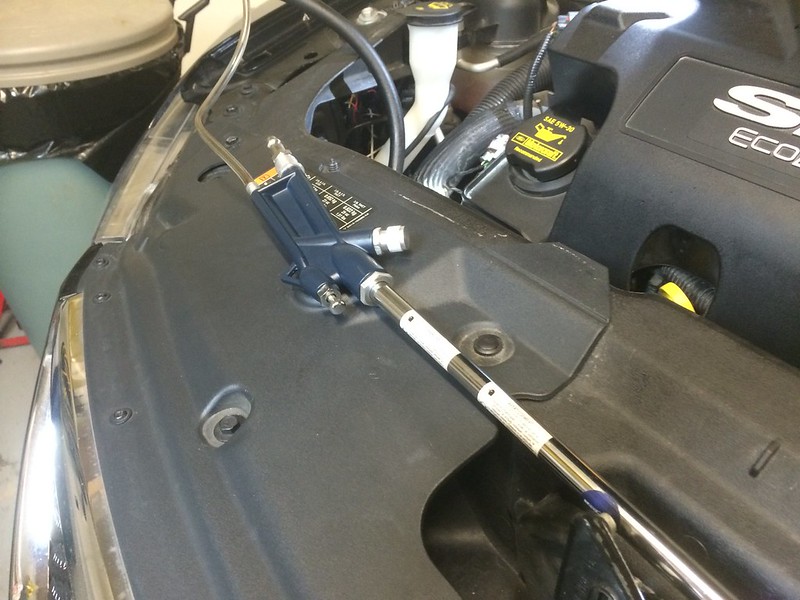Quote from: SHOdded on April 18, 2014, 02:36:29 PM
Sounds like the IC could use a drain plug! Did you disconnect hoses to do this, Shoboat, without having to pull the unit out? N/M, just saw your post in the other PVC thread 
This is exactly how I did it, I pulled off the intake tube from the TB and CAC. I then attached a 3/16 washer tube to a compressed air cleaner like this. The compressed air cleaner has a port for chemical or water. Using Venturi it pulls the oil from the bottom of the CAC. I decided to do it this was as there is minimal risk of fire or explosion. Using an electric vacuum the vapors must travel through the head of the vacuum. If there is gasoline vapor there is the risk of FIRE! So better safe than sorry, unless of course you have access to a vacuum that is explosion proof and rated to pick up flammable liquids.
 Intaking draining 9
Intaking draining 9 by
sho.boat, on Flickr
I then inserted the clear tube into a 3/8 fuel line, this was necessary as the thinner tube did not have enough rigidity to stay straight as I dropped it into the CAC.
 Intaking draining 2
Intaking draining 2 by
sho.boat, on Flickr
I then inserted this tube down into the CAC, plugged the cleaning wand into compressed air source and put the discharge into a garbage can with a plastic bag lining it. To avoid getting oil all over the place.
 Intaking draining 13
Intaking draining 13 by
sho.boat, on Flickr
 Intaking draining 11
Intaking draining 11 by
sho.boat, on Flickr
I tested oil level after with the dipstick from the car, when I started I had about 3/4 of an inch of oil in the bottom of the CAC. When I was done it didn't really register. I also did a bit of wicking like this. Just to ensure I got as much as I could out.
 Intaking draining 3
Intaking draining 3 by
sho.boat, on Flickr
And the final operation, I must stress that extreme care be taken not to drop anything into the CAC. If you do the only way to get it out is to remove the CAC from the car. Also if you do the wicking use non shedding lint free material. I used acrylic string just to be safe.
http://youtu.be/8xbeo93n4Lg